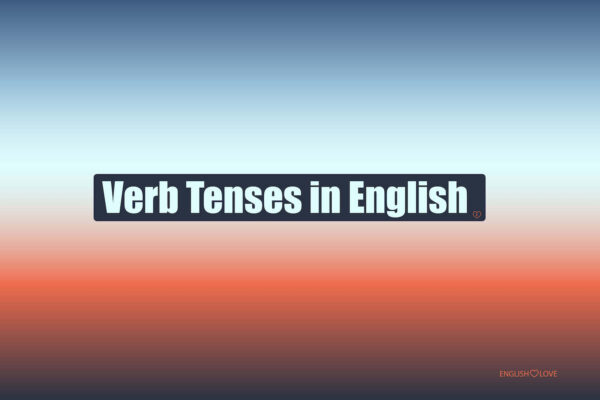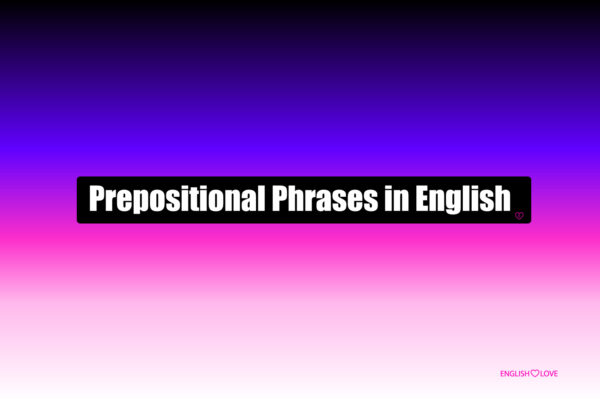Nouns are fundamental to the English language, acting as the primary building blocks. They are essential for anyone aiming to master English. This article delves deep into the various types of nouns, their uses, and how to recognize them.
What is a Noun?
At its core, a noun is a word that represents a person, place, thing, or idea. It’s one of the primary categories of words in English, and understanding nouns is crucial for grasping the structure and meaning of sentences.
- Person: Nouns can denote individuals or groups, such as ‘man’, ‘woman’, ‘teacher’, or ‘team’.
- Place: They can refer to locations, be they specific or general, like ‘city’, ‘park’, ‘restaurant’, or ‘country’.
- Thing: This encompasses tangible objects and entities, from ‘book’ and ‘computer’ to ‘air’ and ‘music’.
- Idea: Nouns can also represent intangible concepts or emotions, such as ‘freedom’, ‘love’, ‘anger’, or ‘knowledge’.
Nouns serve as the subject of a sentence, the object of a verb, or the object of a preposition. For instance, in the sentence “The dog chased the ball“, both ‘dog’ and ‘ball’ are nouns. The former is the subject, and the latter is the object of the verb ‘chased’.
Furthermore, nouns can be adorned with adjectives to provide more detail. For example, “blue car” or “happy child”. They can also be paired with articles like ‘a’, ‘an’, and ‘the’ to specify their definiteness or indefiniteness in a sentence.
Types of Nouns
Concrete Nouns
These nouns refer to physical entities that can be perceived through one or more of the five senses. Whether it’s something you can touch like a ‘chair’ or ‘book’, see like a ‘tree’, hear like ‘music’, taste like ‘salt’, or smell like ‘perfume’, concrete nouns are all around us, grounding our language in the tangible world.
-
- Chair
- Car
- Book
- Tree
- Ocean
Abstract Nouns
Unlike concrete nouns, abstract nouns represent intangible concepts, feelings, qualities, or ideas. They don’t have a physical presence. For instance, ‘love’ isn’t something you can touch, but it’s something you can feel. Similarly, ‘justice’ isn’t something you can see, but it’s a concept we understand and value.
-
- Love
- Happiness
- Anger
- Justice
- Freedom
Collective Nouns
These nouns denote groups or collections of entities. A ‘flock’ isn’t just one bird but a group of them. Similarly, a ‘family’ refers to a group of related individuals living together or related by blood. Collective nouns help us group similar entities into a single unit for easier reference.
-
- Flock (of birds)
- Herd (of cattle)
- Family
- Team
- Bunch (of grapes)
Proper Nouns
These are specific names of people, places, organizations, or things and are always capitalized. They give identity to entities, making them unique. For example, while ‘city’ is a common noun, ‘London’ is a proper noun specifying a particular city.
-
- John
- London
- Amazon River
- Mount Everest
Regular Plural Nouns
These nouns represent more than one of a particular entity and typically have standard plural forms. By adding an ‘s’ or ‘es’ to the end of a word, like turning ‘cat’ into ‘cats’, we can indicate that there’s more than one of that entity.
-
- Books
- Cats
- Chairs
- Dogs
- Trees
Irregular Plural Nouns
These nouns also denote multiple entities but don’t follow the standard plural formation rules. For example, the plural of ‘child’ is ‘children’, and the plural of ‘foot’ is ‘feet’. They often require a change in the word itself to indicate plurality.
-
- Children
- Mice
- Feet
- Men
- Women
Compound Nouns
These are nouns formed by combining two or more words, either by joining them together, hyphenating, or keeping them separate. For example, ‘toothbrush’ is a combination of ‘tooth’ and ‘brush’, and it refers to a brush used for cleaning teeth.
-
- Haircut
- Fireman
- Bus stop
- Toothbrush
- Sunflower
Possessive Nouns
These nouns indicate ownership or association. By adding an apostrophe and sometimes an ‘s’ to a noun, we can show possession. For instance, ‘Rachel’s car’ means the car that belongs to Rachel.
-
- Rachel’s car
- Cat’s toy
- John’s book
- Teacher’s desk
- Friend’s house
Quantifiers with Countable & Uncountable Nouns
Quantifiers are words that help indicate the quantity or amount of nouns. They can specify whether there’s a lot, a little, or a specific number of items. For example, ‘many’ is used with countable nouns like ‘books’, while ‘much’ is used with uncountable nouns like ‘water’.
-
- A few (apples)
- Several (dogs)
- Many (stars)
- Some (water)
- Much (sand)
Articles with Countable & Uncountable Nouns
Articles are words that help specify the definiteness or indefiniteness of nouns. ‘The’ is a definite article, specifying a particular item, while ‘a’ or ‘an’ are indefinite articles, referring to any item of a kind.
- The (car)
- This (book)
- A (dog)
- An (apple)
- Some (bread)
Gender of Nouns
In English, while most nouns aren’t gendered, some are. These nouns can be masculine, feminine, or neuter. For example, ‘actor’ is masculine, ‘actress’ is feminine, and ‘child’ can be either, making it neuter.
- Actor (masculine)
- Actress (feminine)
- Lion (masculine)
- Lioness (feminine)
- Child (neuter)
Noun Phrase
A noun phrase is a group of words centered around a noun, providing more information about it. It can be as simple as ‘a book’ or as complex as ‘the big red book on the shelf that I read last summer’.
- The blue car
- My friend’s house
- A tall tree
- An old book
- The happy child
Noun Clause
Noun clauses are subordinate clauses that function as nouns within a sentence. They can act as subjects, objects, or complements. An example is: “I remember what he said.” Here, “what he said” is a noun clause acting as the object of the verb ‘remember’.
- What he said
- Where she went
- How they did it
- Why he cried
- When she arrived
How are nouns used in sentences?
- Subject of the Sentence: The noun that tells who or what the sentence is about.
- Formula: [Noun] + [Verb] + [Object (optional)]
- Example: Cats (Noun) purr (Verb).
- Object of the Verb: The noun that receives the action of the verb.
- Formula: [Subject] + [Verb] + [Noun]
- Example: She (Subject) reads (Verb) books (Noun).
- Object of the Preposition: The noun that follows a preposition in a prepositional phrase.
- Formula: [Preposition] + [Noun]
- Example: On (Preposition) the table (Noun).
- Possessive Form: Shows ownership or association.
- Formula: [Noun’s] + [Object]
- Example: John’s (Noun’s) car (Object).
- Direct Address: Refers directly to someone or something.
- Formula: [Exclamation or Name], [Rest of the sentence]
- Example: John (Name), can you pass the salt?
- Appositive: A noun or noun phrase that renames or explains another noun or noun phrase.
- Formula: [Noun] + [,] + [Appositive] + [,]
- Example: My friend, Sarah, is an artist.
- Predicate Nominative: A noun or pronoun that follows a linking verb and renames or identifies the subject.
- Formula: [Subject] + [Linking Verb] + [Noun]
- Example: She (Subject) is (Linking Verb) a teacher (Noun).
Countable vs. Uncountable Nouns
One of the fundamental classifications of nouns in English is based on whether they can be counted or not. This distinction is crucial because it affects how we use the nouns in sentences, especially in terms of quantifiers and verb agreement.
Countable Nouns
-
- Definition: These are nouns that can be counted, meaning they have both singular and plural forms.
- Examples:
- Cat (singular) – Cats (plural)
- Book (singular) – Books (plural)
- City (singular) – Cities (plural)
- Usage in Sentences:
- I have three cats.
- She read two books last week.
- There are several cities in this state.
Uncountable Nouns
-
- Definition: These nouns cannot be counted because they refer to a whole or mass rather than individual units. They are usually in singular form and don’t have a regular plural.
- Examples:
- Water (not “waters” in the context of drinking)
- Information (not “informations”)
- Sand (not “sands” unless referring to multiple types or beaches)
- Usage in Sentences:
- I need some water.
- She gave me a lot of information.
- The beach has soft sand.
Note: The distinction between countable and uncountable nouns affects the choice of quantifiers. For instance, we use “many” with countable nouns (many cats) and “much” with uncountable nouns (much water). Similarly, “a few” is used with countable nouns (a few books) and “a little” with uncountable nouns (a little sand).
Conclusion
Nouns are indispensable in the English language, referring to people, animals, places, objects, and ideas. They come in various forms, each with its unique characteristics and uses. Understanding and using them correctly is crucial for effective communication in English.
FAQ about Nouns
What is the difference between a common noun and a proper noun?
A common noun refers to general items, people, or places and is not capitalized unless it starts a sentence. For example, city, girl, and river. On the other hand, a proper noun is the specific name given to a particular person, place, or thing and is always capitalized. For example, New York City, Sarah, and Mississippi River.
Can a word be both a concrete noun and an abstract noun?
Yes, a word can function as both a concrete and an abstract noun depending on the context. For instance, the word ‘love’ can be an abstract noun when referring to the emotion (I feel love) and a concrete noun when referring to a score in tennis (The score is 15-love).
How do I identify a noun in a sentence?
Identifying nouns in a sentence often involves looking for words that name people, places, things, or ideas. Asking the questions ‘who?’ or ‘what?’ in relation to the verb can help identify the noun. For example, in the sentence ‘The dog barks’, asking ‘Who barks?’ helps identify ‘dog’ as the noun.
What is the role of quantifiers in using nouns correctly?
Quantifiers are words used before nouns to give information about quantity. They help in distinguishing between countable and uncountable nouns. For countable nouns, we use quantifiers like a few, several, many, etc., and for uncountable nouns, we use quantifiers like a little, much, a lot of, etc. Understanding the correct quantifiers to use with different nouns is essential in constructing grammatically correct sentences.




